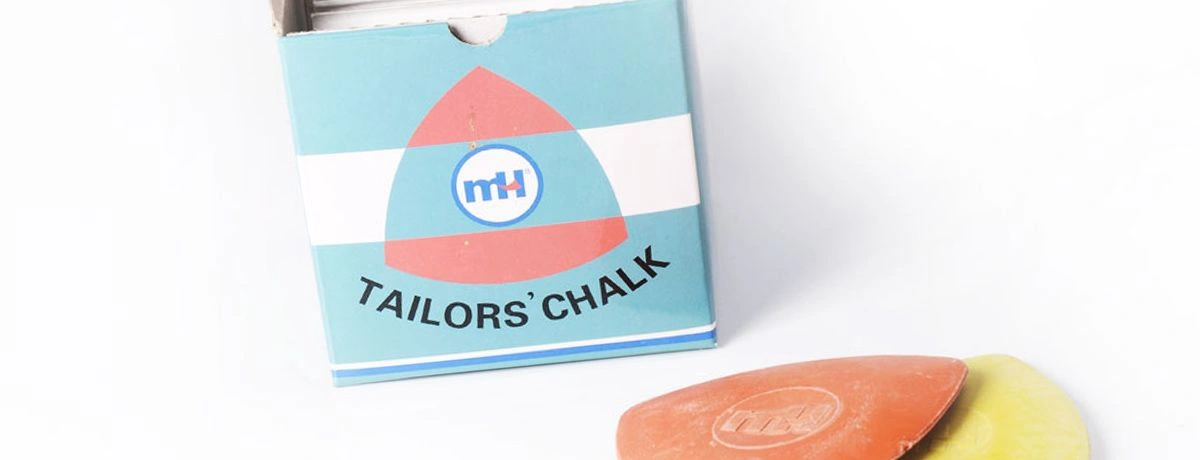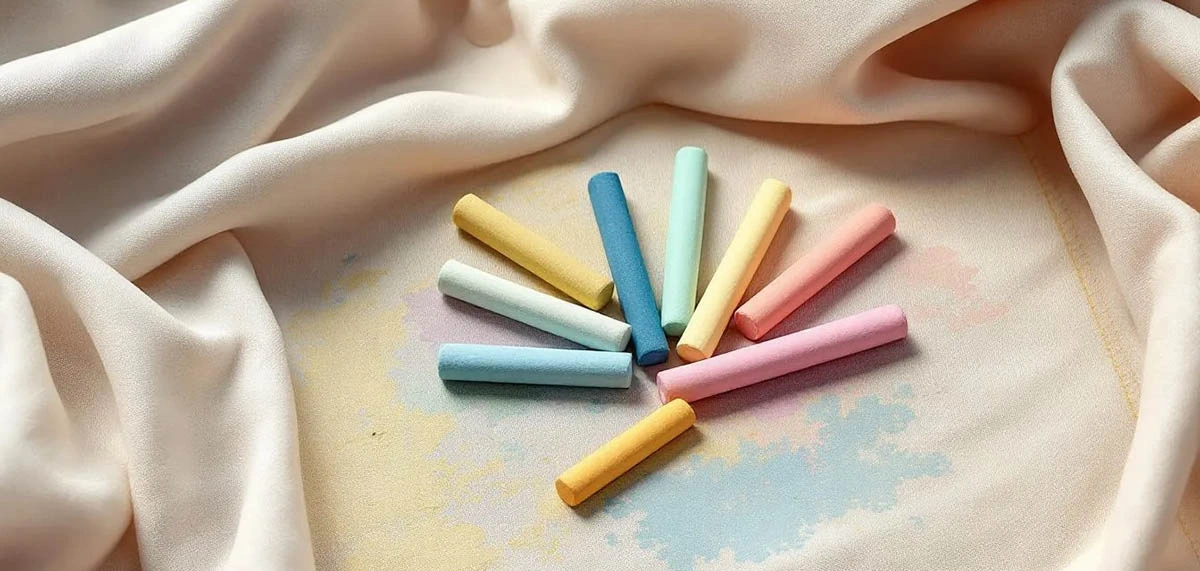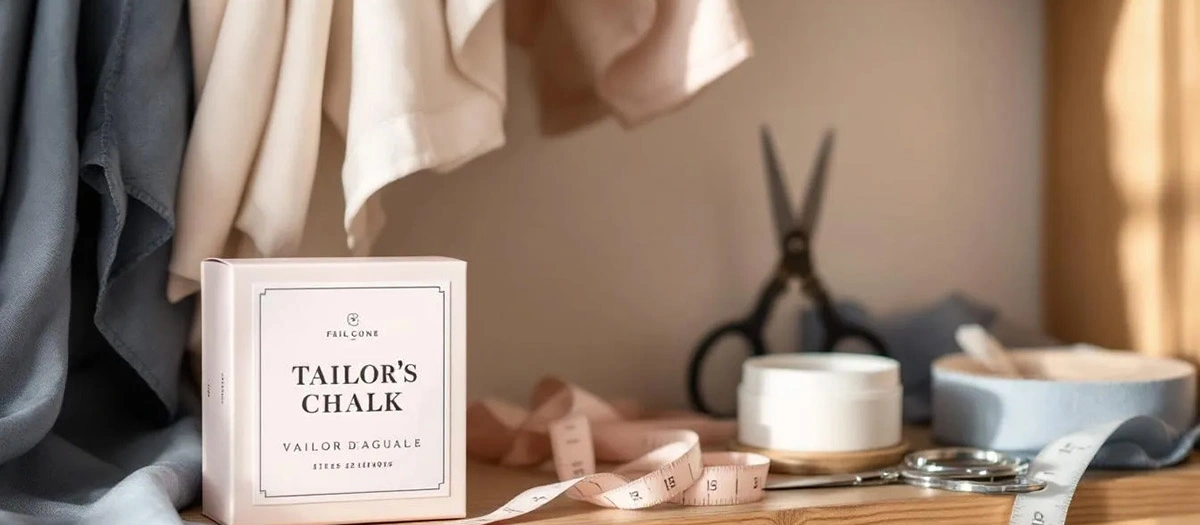Tailors Chalk for Sewing: Essential Fabric Marking Tools

Tailors chalk for sewing is an essential tool that helps in marking fabrics for accurate sewing. Whether you’re working with delicate silk or sturdy denim, choosing the right type of chalk ensures your markings are clear and the fabric remains undamaged. This guide will explore the different types of tailor’s chalk and how to choose the best one for your fabric.
Key Takeaways
-
Tailor’s chalk is essential for precise fabric marking, enhancing the fit and quality of garments while preventing misalignment during sewing.
-
Choosing the right type of tailor’s chalk is critical; clay-based chalk is suited for woven fabrics, while wax-based options work well on thicker materials.
-
Using contrasting chalk colors appropriate for fabric types improves visibility, ensuring clear markings throughout the sewing process.
Tailor's Chalk: An Indispensable Tool for Sewing
Tailor’s chalk is an indispensable tool in the sewing world, enabling clear and precise markings on fabric for various projects. It is the unsung hero that ensures every stitch, cut, and seam is perfectly aligned, contributing significantly to the quality and fit of the finished garment. Imagine the frustration of sewing an entire garment only to realize that the seams are uneven or the pattern is off. Tailor’s chalk eliminates these issues by providing a reliable way to mark fabrics accurately.
Choosing the right type of tailor’s chalk for your fabric is crucial. Not only does it enhance the marking process, but it also preserves the integrity of the material. For delicate fabrics like silk, a clay-based chalk is advisable as it minimizes the risk of damage. This level of precision and care ensures that your garments are not only beautiful but also durable.
Tailor’s chalk is available in various forms, meeting specific needs for different fabrics and sewing projects. From traditional clay-based chalk to wax-based options, understanding these types will help you make an informed decision.
The following sections will explore the different types of tailor’s chalk and how to select the best one for your fabric.
Types of Tailor's Chalk
There are several types of tailor’s chalk, each serving a specific purpose:
-
Clay-based tailor’s chalk is commonly used and is available in various shapes, including squares and triangles.
-
This traditional chalk is ideal for woven fabrics, providing clear, precise markings that are easy to remove.
-
It is a staple in many sewing kits due to its versatility and reliability.
Wax-based chalk is another popular option, made primarily from wax and available in both square and pencil forms. Key features include:
-
Suitable for thicker materials, making it versatile for different sewing projects
-
The wax ensures that the markings stay in place during the sewing process
-
Markings can be easily removed by ironing or washing
In addition to these, tailor’s chalk is also available in other forms like blocks, pencils, and wheels, each catering to different marking needs. MH offers a complete range of tailor’s chalk for sewing, including:
-
wax chalk
-
clay chalk
-
triangle chalk
-
pen-type chalk
-
washable marking chalk
By understanding these distinctions, you can select the optimal tool for your project.
Choosing the Right Tailor's Chalk for Your Fabric
Selecting the appropriate tailor’s chalk is key for effective marking and fabric preservation. Using the correct chalk type for your fabric helps avoid potential damage and ensures that the markings can be easily removed once the project is complete. Wax chalk is recommended for fabrics that are thicker and more heat-tolerant. It provides better performance for those materials. On the other hand, for extra-sensitive materials that cannot be ironed, disappearing chalk is the best option.
Different fabrics need specific types of chalk for the best results. For example, white chalk is best for dark fabrics, while black chalk works well on light-colored materials. MH’s tailor’s chalk products are designed for precise fabric marking, easy to remove, and suitable for a wide range of fabrics, including cotton, polyester, silk, and denim.
Choosing the right tailor’s chalk not only makes the marking process more efficient but also helps preserve the quality of your fabric. Understanding your fabric’s needs and selecting the right chalk ensures precise and careful execution of your sewing projects.
Benefits of Using Tailor's Chalk in Sewing
Tailor’s chalk is crucial for marking patterns and guidelines on fabric, aiding in the creation of precise sewing projects. It ensures that every cut, seam, and stitch is perfectly aligned, contributing significantly to the overall quality and fit of the finished garment. The ability to make clear, precise markings on fabric is invaluable, especially when working on complex patterns or intricate designs.
One of the significant benefits of using tailor’s chalk is its temporary nature, allowing for easy removal of marks. This ensures that adjustments can be made without damaging the fabric. Whether you are marking seam allowances, dart placements, or pleat lines, tailor’s chalk provides the flexibility to make changes as needed, ensuring that your final product is flawless.
Another advantage of tailor’s chalk is its versatility:
-
It works well on various fabric types.
-
It provides excellent visibility on both light and dark materials.
-
By choosing a contrasting chalk color relative to the fabric, you can enhance the visibility of your markings during cutting and sewing.
This versatility makes tailors’ chalk a handy essential tool in any sewing kit, whether you are working on a simple project or a complex garment.
How to Use Tailor's Chalk Effectively
Using tailor’s chalk effectively maximizes its benefits. Before using tailor’s chalk, ensure your fabric is clean, pressed, and flat to achieve accurate markings. Always test the chalk on a scrap of fabric to prevent unwanted staining or discoloration. This simple step can save you from potential mistakes and ensure that your markings are clear and removable.
When marking seam allowances or other details:
-
Use a ruler or measuring tape to guide the chalk, ensuring straight lines.
-
Stabilize the fabric layers with pins or weights to help maintain accuracy during marking.
-
Regularly sharpen your tailor’s chalk to maintain a fine edge, allowing for more precise markings.
To use tailor’s chalk effectively:
-
Avoid pressing too hard when applying tailor’s chalk to prevent embedding it into the fabric fibers, which can make removal difficult.
-
Use water-soluble tailor’s chalk for delicate fabrics, as it can be easily wiped off with a damp cloth that has been washed.
-
Use a damp cloth to gently remove water-soluble chalk marks without damaging the fabric.
Following these tips will ensure your chalk markings are precise, clear, and easily removable marking tools, so they won’t disappear easily.
Tailor's Chalk Colors: Choosing the Best for Your Project

Tailor’s chalk is available in various colors, each designed for different fabric types and marking needs. Choosing the right color ensures that your markings are visible and easy to follow. Bright colors like red, blue, and yellow are effective for marking on diverse fabric shades, improving visibility.
When working on fabrics, consider the following guidelines for choosing chalk colors:
-
For dark fabrics, use white or light-colored chalk.
-
For light-colored materials, use dark chalk like black or blue.
-
Choose a color that provides a strong contrast with your fabric to ensure markings are clear and visible.
This consideration is especially important when working on intricate patterns or detailed brush designs that hold human item review mistake inc significance in quilting.
Carefully selecting the right color of tailor’s chalk ensures clear markings, making the sewing process more efficient and enjoyable. The right color choice can significantly impact the overall quality and precision of your sewing projects.
MH's Wholesale Tailor's Chalk: Quality and Affordability

MH offers a diverse selection of tailor’s chalk with a strong emphasis on maintaining high quality while ensuring competitive pricing. Whether you are a global manufacturer, garment factory, or wholesaler, MH’s products cater to various needs in the garment industry. Their extensive range of tailor’s chalk includes:
-
Wax chalk
-
Clay chalk
-
Triangle chalk
-
Pen-type chalk
-
Washable marking chalk This ensures that you can find the perfect tool for your specific project.
MH is recognized as a trusted partner for garment accessory distributors and tailoring supply chains worldwide. Their commitment to quality and affordability makes them a go-to source for tailor’s chalk and other garment accessories. Choosing MH ensures confidence in the quality and reliability of your sewing tools.
MH also offers bulk supply at factory-direct prices alongside their high-quality products. This ensures that you get the best value for your investment, making MH an ideal partner for all your sewing and tailoring needs.
Custom Packaging and Branding Services
MH provides tailored packaging solutions and OEM/ODM services for its tailor’s chalk, enabling brands to create unique products. This service offers:
-
The ability for businesses to establish their unique brand identities
-
Opportunities to stand out in the market
-
Custom packaging options for bulk orders
-
Specific branding solutions
Whether you are interested in custom packaging for a bulk order or need specific branding solutions, MH has you covered.
With MH’s custom packaging and branding services, you can create tailor’s chalk products that reflect your brand’s image and meet your customers’ needs. These services are designed to provide flexibility and customization, ensuring that you can offer unique products that set you apart from the competition.
Leveraging MH’s custom packaging and branding services enhances your product offerings and builds a strong market presence. This added value can help you attract more customers and grow your business.
Summary
In conclusion, tailor’s chalk is an essential tool for any sewing enthusiast or professional tailor. Its ability to provide clear, precise markings on fabric makes it invaluable for ensuring the quality and fit of your garments. By understanding the different types of tailor’s chalk and how to choose the right one for your fabric, you can enhance your sewing projects and achieve professional results.
MH’s high-quality, affordable tailor’s chalk products, along with their custom packaging and branding services, make them an excellent choice for all your sewing needs. Whether you are a global manufacturer or a small business, MH has the products and services to help you succeed. Embrace the power of tailor’s chalk and elevate your sewing projects to new heights.
Frequently Asked Questions
What are the different types of tailor's chalk available?
Tailor's chalk is available in clay-based, wax-based, and disappearing varieties, each designed for specific fabrics and marking requirements. Selecting the appropriate type ensures accurate and clear markings for your sewing projects.
How do I choose the right tailor's chalk for my fabric?
To choose the right tailor's chalk for your fabric, select clay-based chalk for delicate fabrics like silk, wax chalk for thicker materials, and disappearing chalk for extra-sensitive fabrics that cannot be ironed. This ensures precise marking without damaging your fabric.
What are the benefits of using tailor's chalk in sewing?
Using tailor's chalk in sewing offers clear, precise markings that are easily removable, enhancing the quality and fit of garments across various fabrics. This versatility makes it an essential tool for any sewing project.
How can I use tailor's chalk effectively?
To use tailor's chalk effectively, ensure your fabric is clean and flat, test the chalk on a scrap piece, and utilize a ruler for accurate markings while avoiding excessive pressure. This will help you achieve precise and clean markings without damaging your fabric.
What custom packaging and branding services does MH offer?
MH offers tailored packaging solutions alongside OEM and ODM services, enabling brands to create distinctive products that align with their image and satisfy customer requirements.


